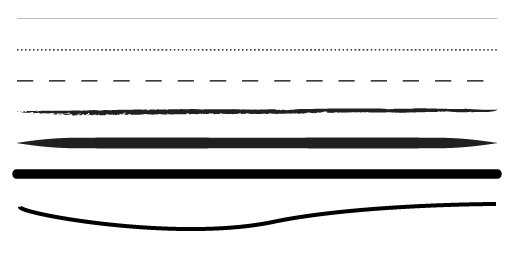Table Of Content

On the other hand, if retirement intentions is the criterion variable, repeated measures of this variable are important for assessing change. Repeated measures also enable the simultaneous assessment of change in retirement intentions and its alleged precursors; it could be that a variable like job satisfaction (a presumed cause of retirement intentions) is actually lowered after the retirement intentions are formed, perhaps in a rationalization process. That is, individuals first intend to retire and then evaluate over time their attitudes toward their present job. This kind of reverse causality process would not be detected in a design measuring job satisfaction at Time 1 and retirement intentions at Time 2. Given the importance of and the repeated call for longitudinal studies to investigate work, aging, and retirement-related phenomena (e.g., Fisher, Chaffee, & Sonnega, 2016; Wang, Henkens, & van Solinge, 2011), there is a need for more nontechnical discussions of the relevant conceptual and methodological issues. Such discussions would help researchers to make more informed decisions about longitudinal research and to conduct studies that would both strengthen the validity of inferences and avoid misleading interpretations.
Offline Survey
Longitudinal studies tend to be challenging to conduct because large samples are needed for any relationships or patterns to be meaningful. Since objectives and rules for long-term studies are established before data collection, these studies are authentic and have high levels of validity. For example, a longitudinal study could be used to examine the progress and well-being of children at critical age periods from birth to adulthood. The thing to remember when thinking about what a longitudinal study is is that they can have broad objectives.
Costly and time-consuming
Selective Attrition in Psychology Experiments - Verywell Mind
Selective Attrition in Psychology Experiments.
Posted: Wed, 09 Feb 2022 08:00:00 GMT [source]
For example, imagine that researchers are interested in the mental health benefits of exercise in middle age and how exercise affects cognitive health as people age. The researchers hypothesize that people who are more physically fit in their 40s and 50s will be less likely to experience cognitive declines in their 70s and 80s. However, they can also include qualitative elements, such as interviews or observations, to provide a more in-depth understanding of the studied phenomena.
Recruiting and retaining community-based participants in a COVID-19 longitudinal cohort and social networks study ... - BMC Medical Research Methodology
Recruiting and retaining community-based participants in a COVID-19 longitudinal cohort and social networks study ....
Posted: Mon, 27 Feb 2023 08:00:00 GMT [source]
Using data from other sources
If measurement frequency is relatively sparse (e.g., once a day), it is likely that simple paper-and-pencil or web-based modes of collection will be sufficient without creating too much interference (Green et al., 2006). In contrast, as measurements become increasingly intensive (e.g., four or five times/day or more), reliance on more accessible survey modes will become important. Thus, a format that allows for desktop, laptop, or smartphone administration should be of greatest utility in such intensive designs. The optimal and most widely pursued method to examine psychological, emotional, and social changes in development is by pursuing a longitudinal design. The major features of longitudinal designs are highlighted and contrasted with cross-sectional designs.
Retrospective Study
Longitudinal research should pay special attention to the measurement invariance issue. Chan (1998) and Schmitt (1982) introduced Golembiewski and colleagues’ (1976) notion of alpha, beta, and gamma change to explain why measurement invariance is a concern in longitudinal research. When the measurement of a particular concept retains the same structure (i.e., same number of observed items and latent factors, same value and pattern of factor loadings), change in the absolute levels of the latent factor is called alpha change. Only for this type of change can we draw the conclusion that there is a specific form of growth in a given variable. When the measurement of a concept has to be adjusted over time (i.e., different values or patterns of factor loadings), beta change happens. Although the conceptual meaning of the factor remains the same over measurements, the subjective metric of the concept has changed.
Longitudinal designs that have longer measurement intervals may also capture immediate experiences, but more often will ask participants to provide some form of summary of these experiences, typically across the entire interval between each measurement occasion. For example, a panel design with a 6-month interval may ask participants to report on affective states, but include a time frame such as “since the last survey” or “over the past 6 months”, requiring participants to mentally aggregate their own experiences. In practice, researchers determine their choice of the length of the time interval in conjunction with the choice of number of time points and the choice of the length of the total time period of study. Based on my experiences as an author, reviewer, and editor, I suspect that these three choices are influenced by the specific resource constraints and opportunities faced by the researchers when designing and conducting the longitudinal study. Deviation from optimal time intervals probably occurs more frequently than we would like, since decisions on time intervals between measures in a study are often pragmatic and atheoretical.
Goals of Longitudinal Data and Longitudinal Research
If you pick a different sample, variations in individual preferences could skew your results. A group of researchers is studying whether there is a link between violence and video game usage. To reduce the amount of interference with their natural habits, these individuals come from a population that already plays video games.
Another example is the study of performance of a particular player or a sports team (i.e., win, lost, or tie) over hundreds of games. The research question could be to find out time-varying factors that could account for the cyclical patterns of game performance. The statistical techniques typically used to analyze this type of data belong to the family of categorical time series analyses. A detailed technical review is beyond the current scope, but interested readers can refer to Fokianos and Kedem (2003) for an extended overview.
Person 1, for example, may have the values 1, 22, 67, 95, 115, and 133, and was contacted after Time 3 on Day 72 from the date of hire. Person 2 may have the values 1, 31, 56, 101, 141, and 160, and was contacted after Time 2 on Day 40 from date of hire. Thus, for Person 1, this new variable would have the values 0, 0, 0, 23, 43, and 61, and for Person 2, the values would be 0, 0, 16, 61, 101, and 120.
I believe that applying a dynamical systems framework will greatly advance our research. Applying the dynamic systems framework (e.g., DeShon, 2012; Vancouver, Weinhardt, & Schmidt, 2010; Wang et al., 2016) forces us to more explicitly conceptualize how changes unfold over time in a particular system. Dynamic systems models can also answer the why question better by specifying how elements of a system work together over time to bring about the observed change at the system level. Studies on dynamic systems models also tend to provide richer data and more detailed analyses on the processes (i.e., the black boxes not measured in traditional research) in a system. A number of research design and analysis methods relevant for dynamical systems frameworks are available, such as computational modeling, ESM, event history analyses, and time series analyses (Wang et al., 2016). Another example of models that capture this complexity and are increasingly used in both immediate and longer-term longitudinal research are multivariate latent change score models (Ferrer & McArdle, 2010; McArdle, 2009; Liu et al., 2016).
Like with every research method, longitudinal studies have their advantages and disadvantages. While trying to understand what is a longitudinal study, it is important to get the particular ways in which they’re useful, and situations in which they’re not. A retrospective longitudinal study is when you take pre-existing data from previous online surveys and other research. The objective here is to put your results in a larger timeline and observe the variation in results over time. What makes retrospective studies longitudinal is simply the fact that they’re aimed at revealing trends over time.

However, sometimes the location and the number of spline knots are unknown before data collection. Different spline models and estimation techniques have been developed to account for these different explorations of spline knots (Marsh & Cormier, 2001). In general, spline models can be considered as dummy-variable based models with continuity constraints. Some forms of spline models are equivalent to piecewise linear regression models and are quite easy to implement (Pindyck & Rubinfeld, 1998). The basic idea of latent Markov chains is that observed categories reflect the “true” status on latent categorical variables to a certain extent (i.e., the latent categorical variable is the cause of the observed categorical variable). In addition, because the observations may contain measurement error, a number of different observed patterns over time could reflect the same underlying latent transition pattern in qualitative status.
Without establishing measurement invariance, it is unknown whether we are testing meaningful changes or comparing apples and oranges. A number of references have discussed the procedures for testing measurement invariance in latent variable analysis framework (e.g., Chan, 1998; McArdle, 2007; Ployhart & Vandenberg, 2010). The basic idea is to specify and include the measurement models in the longitudinal model, with either continuous or categorical indicators (see answers to Statistical Techniques #4 below on categorical indicators). With the latent factor invariance assumption, factor loadings across measurement points should be constrained to be equal. Errors from different measurement occasions might correlate, especially when the measurement contexts are very similar over time (Tisak & Tisak, 2000). Thus, the error variances for the same item over time can also be correlated to account for common influences at the item-level (i.e., autocorrelation between items).
As such, although time is not a substantive variable itself in longitudinal research, it is important to make sure that the measurement of time matches the theory that specifies the change construct that is under study (e.g., aging, learning, adaptation, social adjustment). Another clear construct validity improvement gained by using longitudinal research is when one is interested in measuring change. Moreover, Ployhart and Vandenberg (2010) advocate at least three repeated measures because most change rates are not constant; thus, more than two observations will be needed to assess whether and how the rate changes (i.e., the shape of the growth curves). Indeed, three is hardly enough given noise in measurement and the commonality of complex processes (i.e., consider the opponent process example below).













